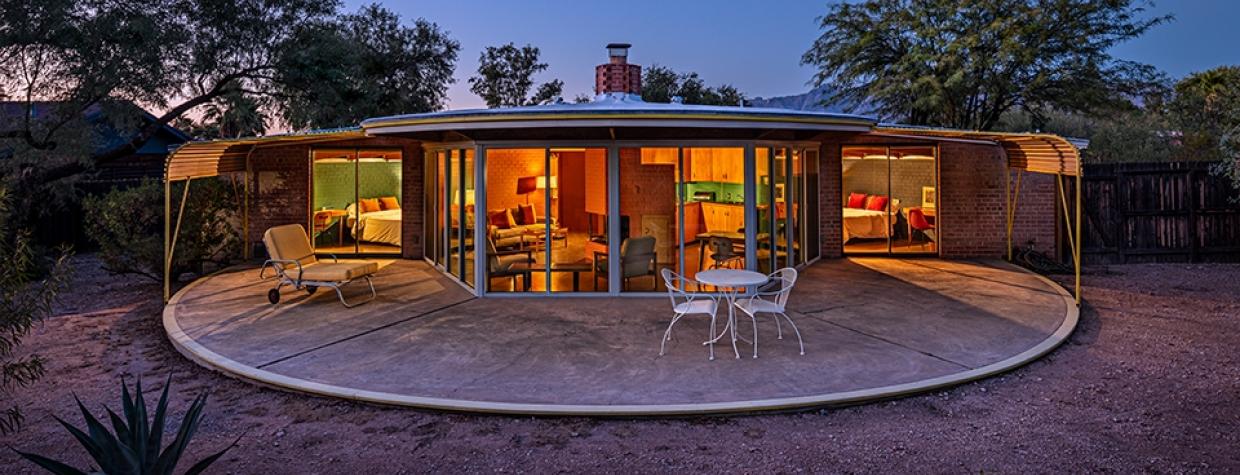From the street, the Ball-Paylore House doesn’t stand out. It’s smaller than most of the houses in Tucson’s Catalina Vista neighborhood, and mature mesquite trees obscure much of its modest facade. But behind its red-brick walls is a time capsule of desert life in the 1950s — along with an innovative example of midcentury modern architecture.
“When you walk in, you’re instantly transported into a completely different architectural environment,” says Demion Clinco, CEO of the Tucson Historic Preservation Foundation, which acquired the house in 2019. “In some ways, it’s very modern and modest, and in others, it’s very beautiful and expressive. And it’s one of a kind.”
Phyllis Ball and Patricia Paylore, two librarians at the nearby University of Arizona, commissioned the 1,200-square-foot house in 1952. Their architect was Arthur T. Brown, a Missouri native who’d made a name for himself in Chicago before arriving in Arizona. In the years following World War II, Brown flourished along with Tucson, designing buildings that harmonized with the harsh desert environment.
The librarians, Brown recalled, wanted something “different, simple in plan, low in cost and free from things.” And Brown delivered, creating a hexagon-based dwelling with dramatic angles in every room. From the fireplace and chimney at the house’s center, exposed roof beams radiate through the living room, kitchen and dining area. Two small bedrooms, their low ceilings a nod to the librarians’ short stature, flank the common areas. Built-in furniture, from the bedroom desks to the living room bookcases, is frozen in time.
But the house’s defining feature might be its “revolving terrace,” a crescent-shaped backyard patio with two sunshades that roll on a track attached to the house. Those innovations allowed Ball and Paylore to have shade wherever they needed it. And the back of the house, all floor-to-ceiling windows and sliding doors, is curved, keeping direct sunlight out of the living spaces in summer. In winter, when the sun is lower in the sky, light on the house’s concrete floor creates heat that’s absorbed and retained by the dark paint on the walls. In short, it’s sustainable — from a time before “sustainability” was a buzzword.
After Paylore, the last of the librarians, died, she left the house to friend Phyllis Koffler, the wife of former UA President Henry Koffler. The couple used it as a guest house and to host scholars visiting the university. The THPF then worked with the Kofflers’ estate to buy the house and protect it from possible redevelopment. The foundation has employed experts to restore the original furniture and paint colors; added new gas lines, an updated air conditioning system and high-speed internet; and repaired plumbing and electrical work.
The house is now available for overnight stays of three nights or longer, and tours are planned once the threat of COVID-19 has passed. All proceeds from those efforts fund further restoration and preservation work at the property, and Clinco hopes people will come and immerse themselves in this unique architectural response to desert life. “It’s really distinctive to the American Southwest,” he says, “and it’s beautifully conceived.”
Tucson, AZ
United States

